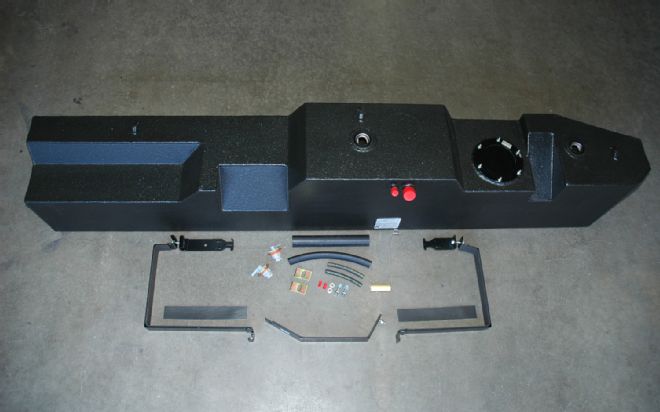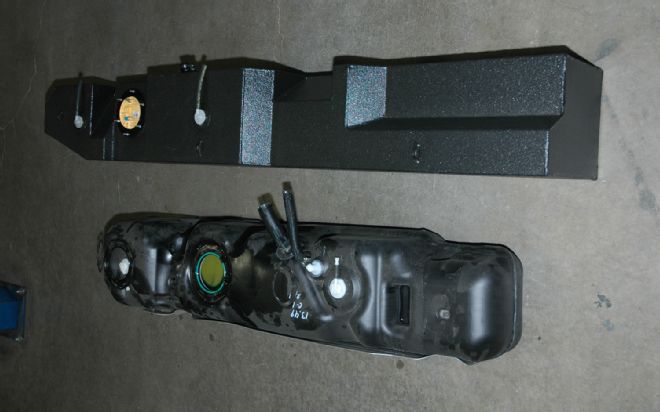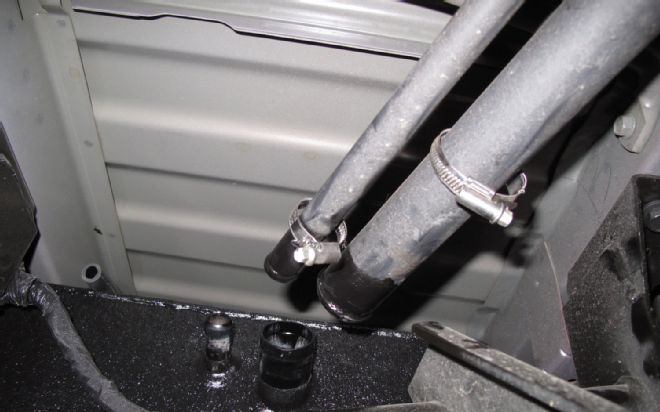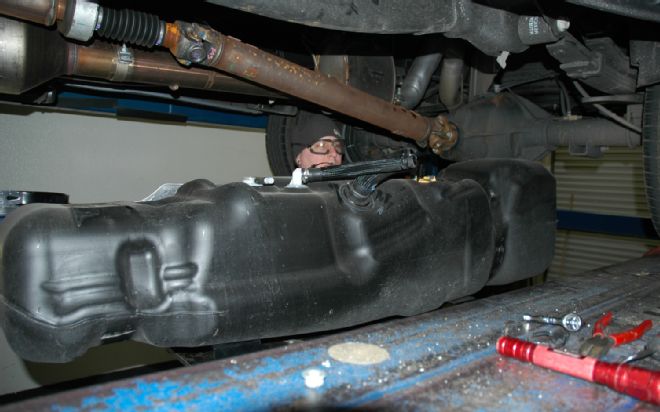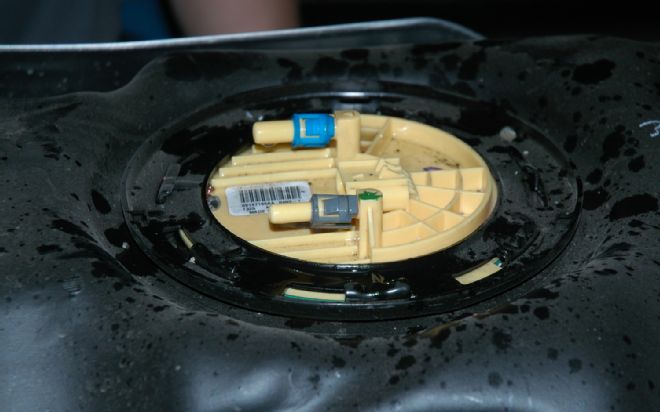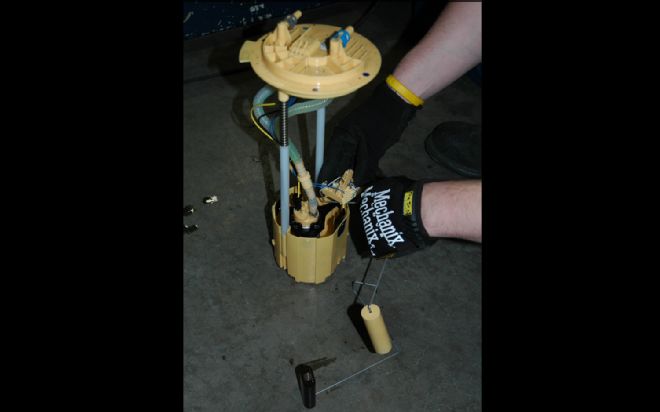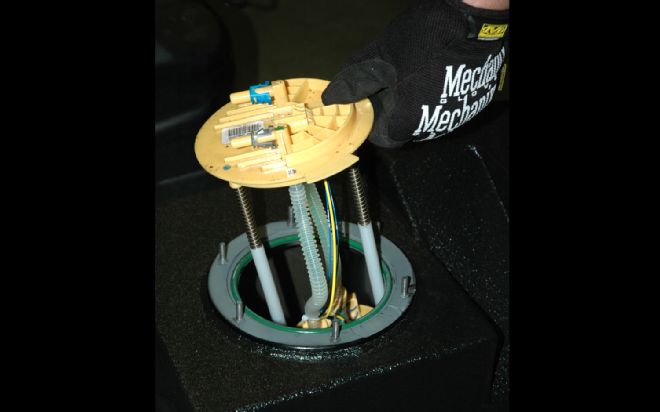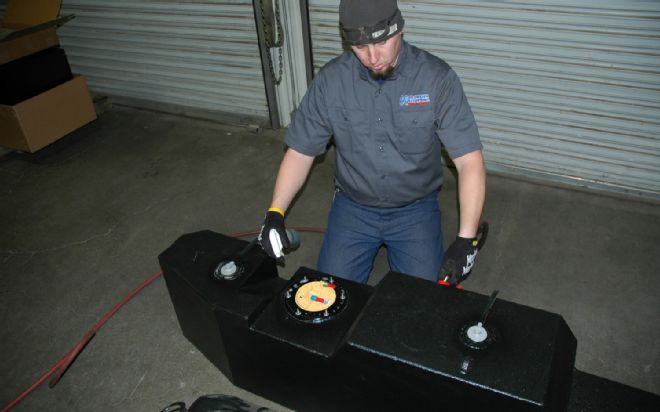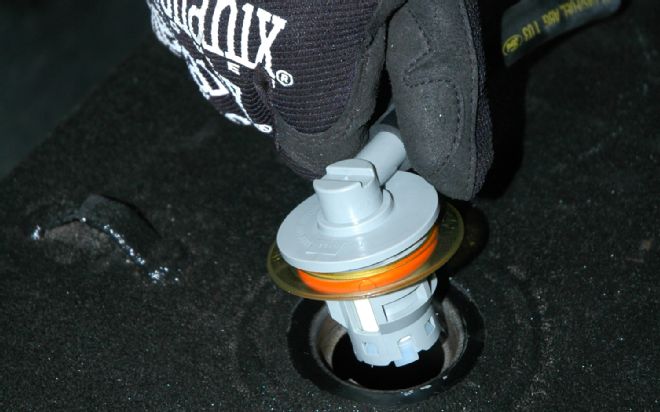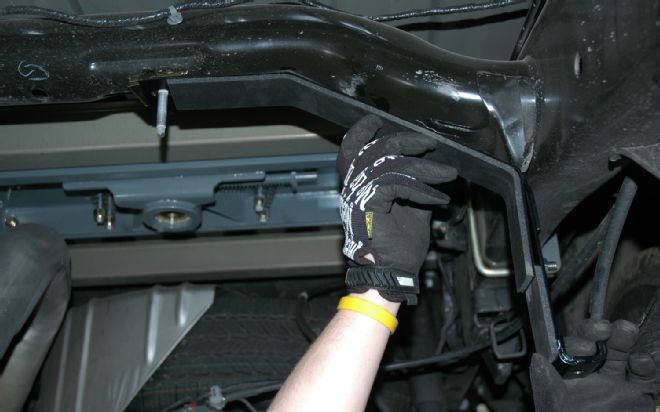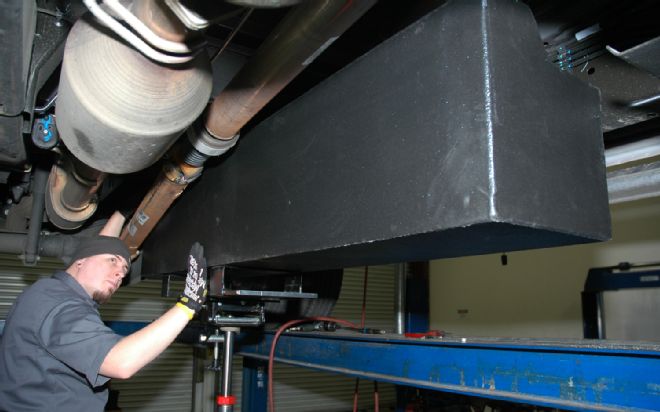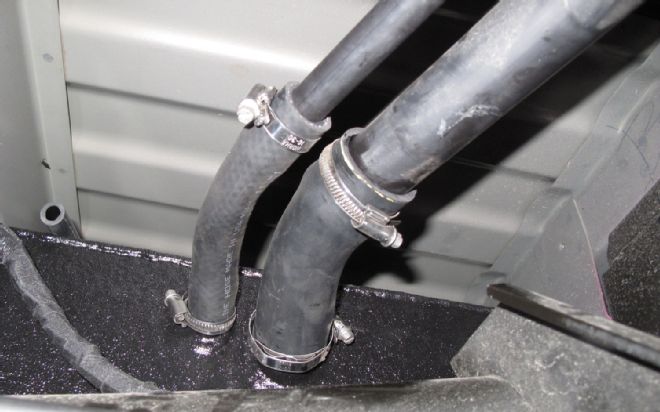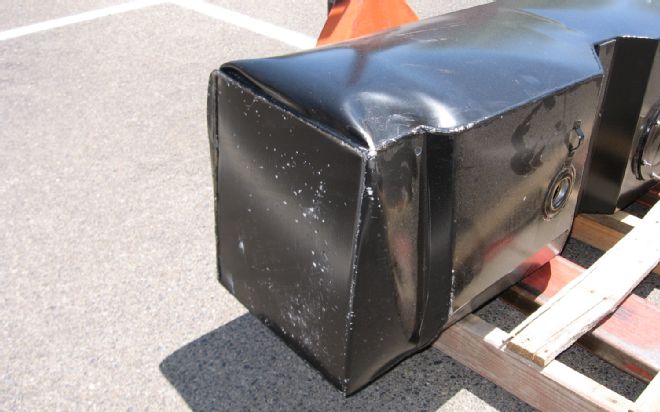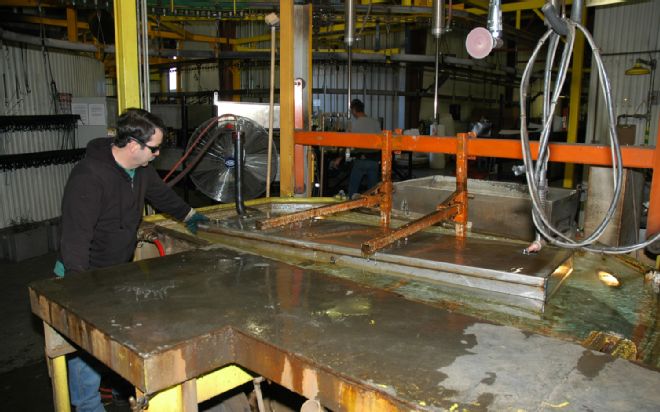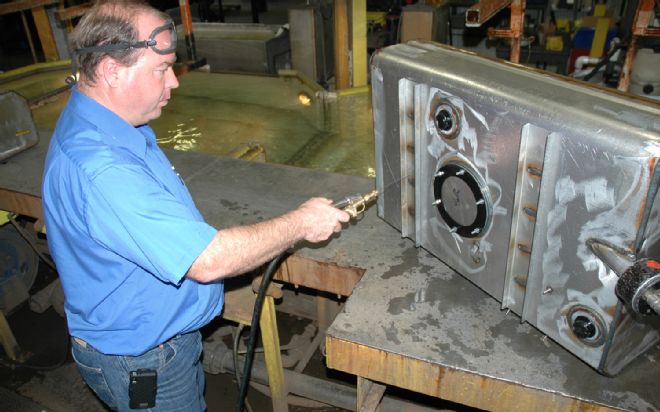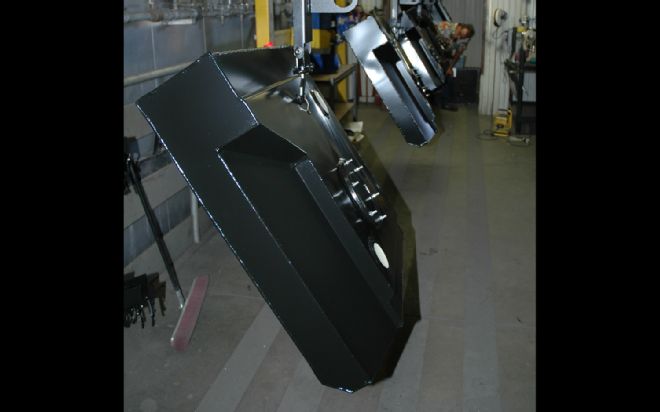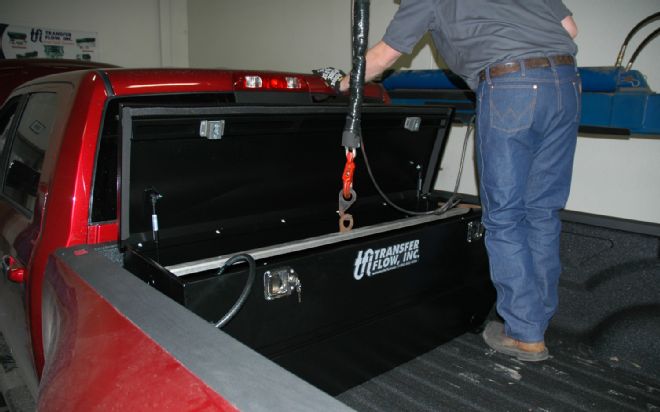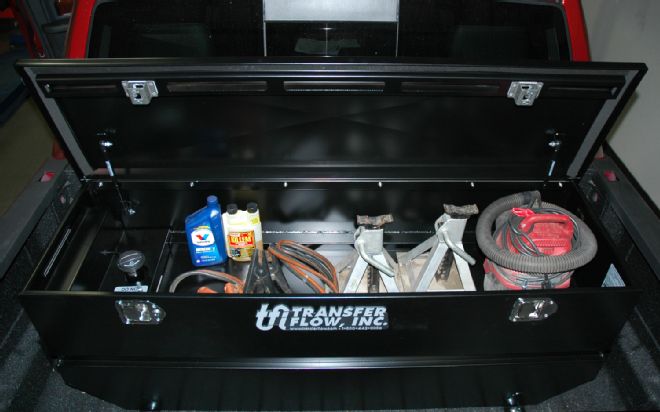If you purchased a 4x4 Crew Cab long-bed Ram 3500, you probably plan on using it for more than just running local errands. On a heavy-duty truck like a Ram 3500, one could assume that everything is bigger: the engine, cooling system, frame, GVWR, etc. But what about the fuel capacity? Chrysler's technology has made the 2012 Cummins diesel legal in all states without the need for a Diesel Emission Fluid tank. Surprisingly, with all that extra room, Dodge's long-bed Crew Cab comes with a little 35-gallon tank. While the Cummins is known for its great fuel economy, if you're hauling a big 10,000-20,000-pound fifth-wheel, at a realistic 9 mpg, that's only going to take you a little over 300 miles.
Transfer Flow, a well-respected designer and manufacturer of aftermarket and OEM fuel tanks, has a knack for getting the most out of your available space. It offers a 60-gallon replacement fuel system for the 2011 and newer 2500 and 3500 Crew Cab long beds, for two- and four-wheel-drive models.

| Transfer Flow 60 Gal Ram 16c
We followed along as one was installed on a 2012 Ram 3500. The long-bed dualie was already on the rack at Transfer Flow's installation facilities in Chico, California. Eric Harper walked us through the procedure.
Installing the Transfer Flow tank is straightforward. It weighs about 200 pounds, so a proper support is necessary. Transfer Flow tank hangers hook into the factory frame slots. Additional padding is added on top to accommodate the shape of the larger tank. No drilling is done.
With the install complete, we sat down with Michael Larocco, one of the mechanical engineers at Transfer Flow, to get an idea of how the company was able to nearly double the fuel capacity of the 2012 Ram. He said it had to imagine what aftermarket products a customer might be installing, like a gooseneck trailer hitch, and make sure there was ample room for general maintenance. Clearance for fuel lines, axles, drivelines, and any component that might need to be moved were all part of the formula.

| Transfer Flow 60 Gal Ram 00
Transfer Flow started with the previous year's model and detailed chassis data from the factory, created a prototype in CAD, and tack-welded it for a test fit. Given the complexity of the new larger tanks, Transfer Flow has advanced to robotic welders to reduce manufacturing time, though many of its aluminum auxiliary tanks and combination toolboxes are hand-welded.
Newer designs like this 60-gallon replacement system must go through rigorous testing, including being dropped, full of water, from a 35-foot tower onto a steel plate on a concrete reinforced platform. If it leaks, it goes back to engineering. Nearly everything, including the electrical harnesses, is made in-house. All finished units go through a pressurized leak test and are fully submerged in a water bath before they are washed, dried, and powdercoated.
The 60-gallon replacement fuel system has a MSRP of $1220. Installation at the Transfer Flow factory in Chico costs $200. Transfer Flow fuel systems are covered by a 3-year/60,000-mile limited warranty. This replacement tank won't give you any better mileage, but on long trips, it'll significantly extend your range. Unless you're pulling a heavy load--such as the aforementioned fifth-wheel--Harper guessed this Ram would get 15 to 20 mpg. With the new 60-gallon tank, that can mean a range of 900-1200 miles. Add a Transfer Flow 40-gallon toolbox, and that could increase the range to 1500-2000 miles. You might only need to stop for coffee on the way your favorite campground.
1. Transfer Flow's 60-gallon replacement tank for the long-bed 2012 Ram Crew Cab comes with all hardware, brackets, and new rollover valves.
2. Though it may not look that big, the replacement tank will significantly extend your range.
3. The first step is to loosen the short rubber connecting hoses to the metal fill and vent tubes, and slip them off.
4. With the factory mounting straps removed, the tank is securely supported with a hydraulic jack and lowered.
5. The factory tank uses a twist-lock compression seal on the sender.
6. A new float arm is attached to give an accurate fuel level calibration for the larger tank.
7.Transfer Flow replaces the twist-lock compression seal with a new O-ring and gasket, and a top-sealing ring that is attached with six nuts over studs.
8. Two new rollover valves are fitted. Soapy water and compressed air are used to double-check all seals.
9. Transfer Flow tank hangers hook into the factory frame slots, and additional padding is added on top to accommodate the shape of the larger tank.
10. The new Transfer Flow tank weighs about 200 pounds, so a proper support is necessary. With the tank slightly lowered, the fuel pickup lines and electrical connection are plugged in.
11. Rubber fill and vent hose connectors need to be cut to length depending on whether the installation is on a single rear wheel or a dualie.
12. To test its design, Transfer Flow drops a tank full of water from a 35-foot tower onto a steel plate on a concrete-reinforced platform. If it leaks, it goes back to engineering.
13. All finished units go through a pressurized leak test and are fully submerged in a water bath.
14. After the water bath test, tanks are rechecked with soapy water to find the smallest leaks.
15. After a pressurized leak test, tanks are washed, dried, and powdercoated.
16. Add a Transfer Flow 40-gallon toolbox, and you have a possible range of 1500 to 2000 miles.
